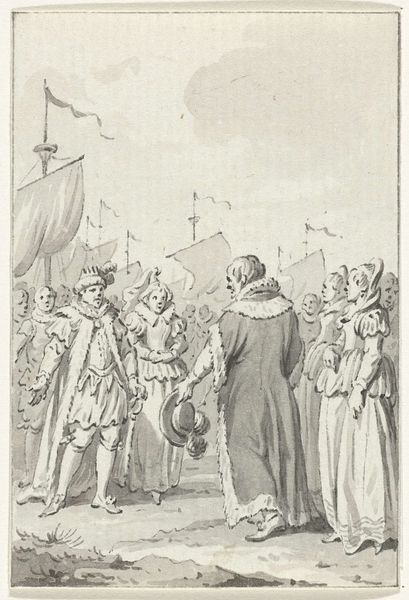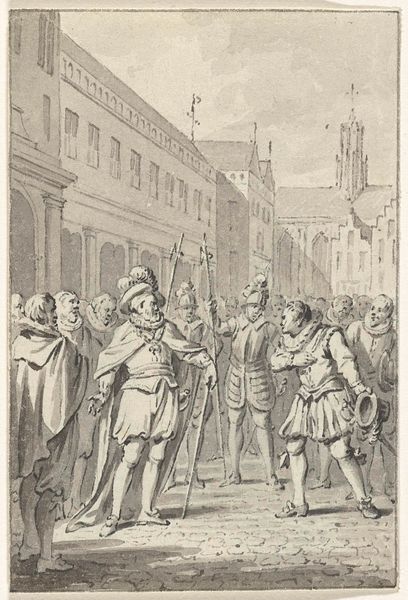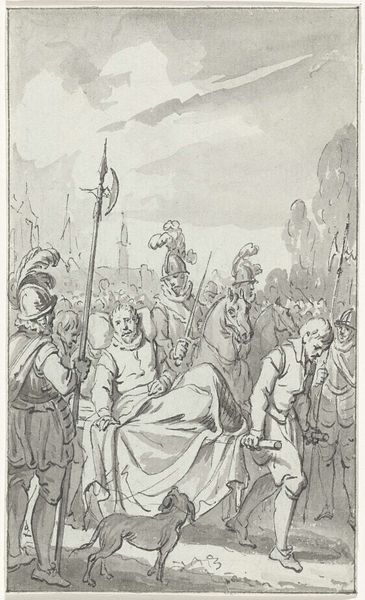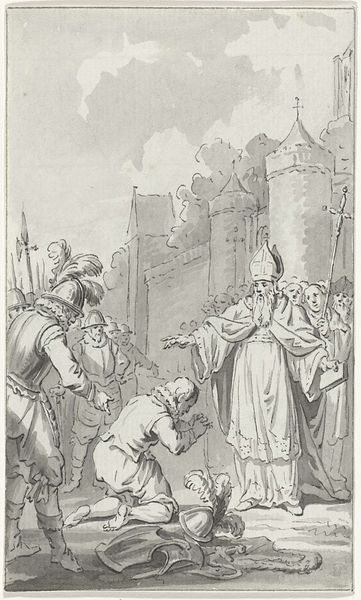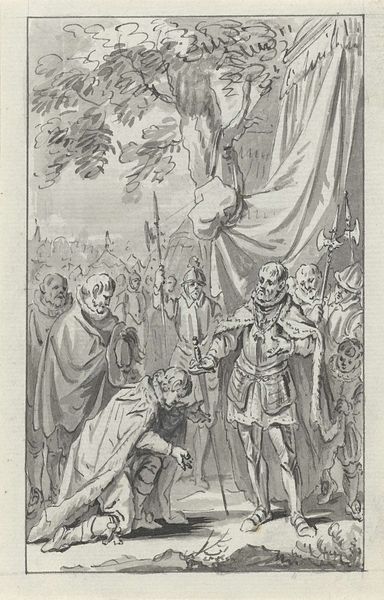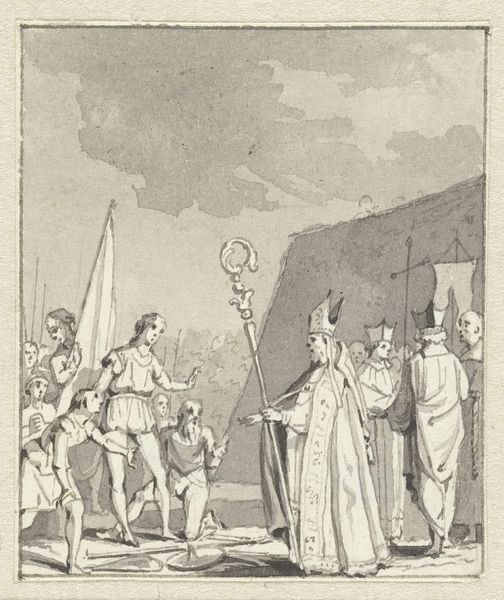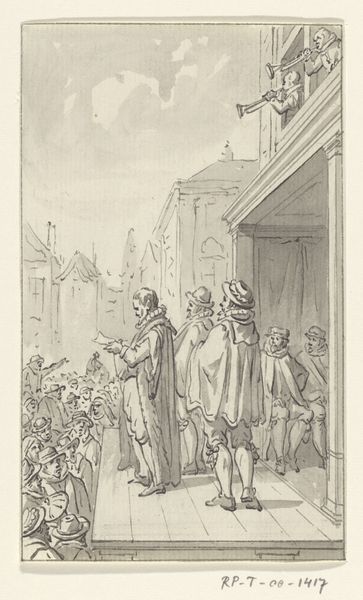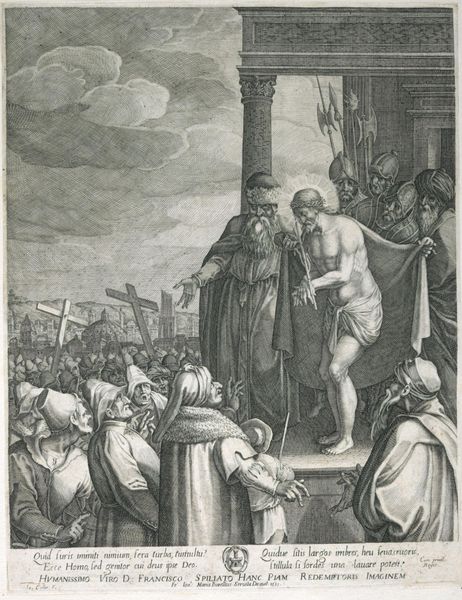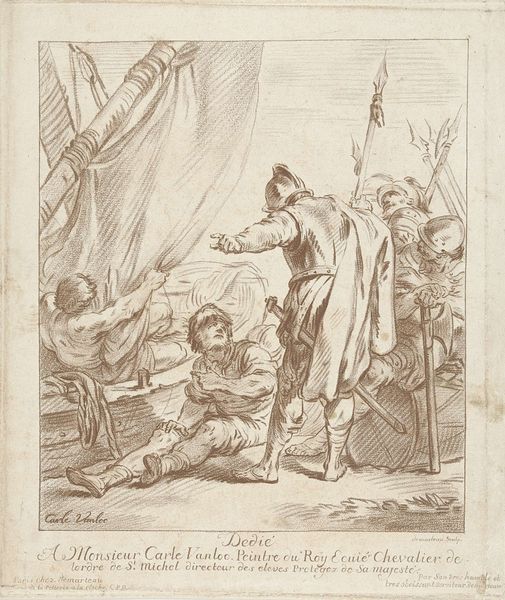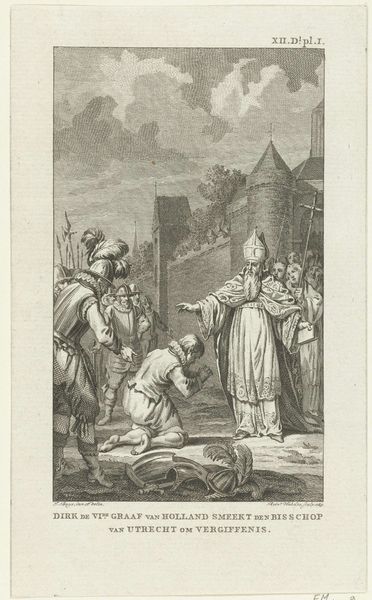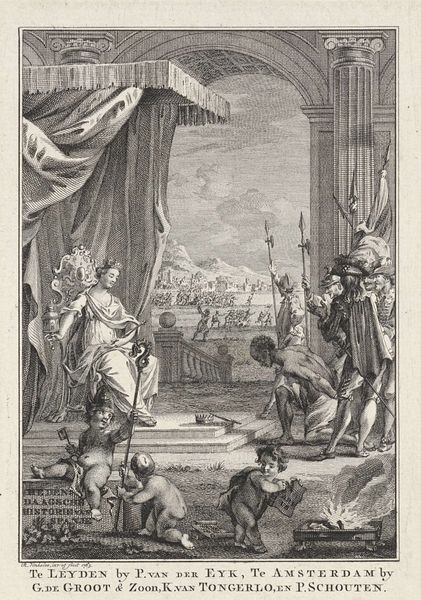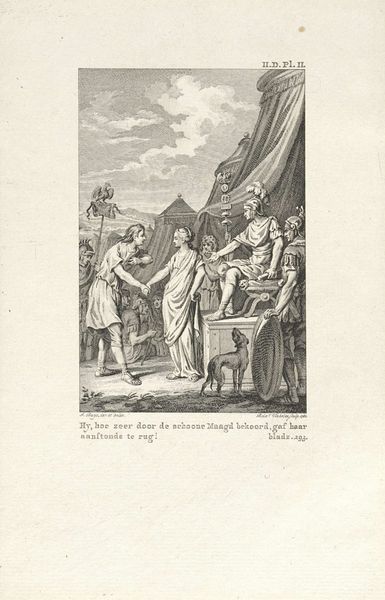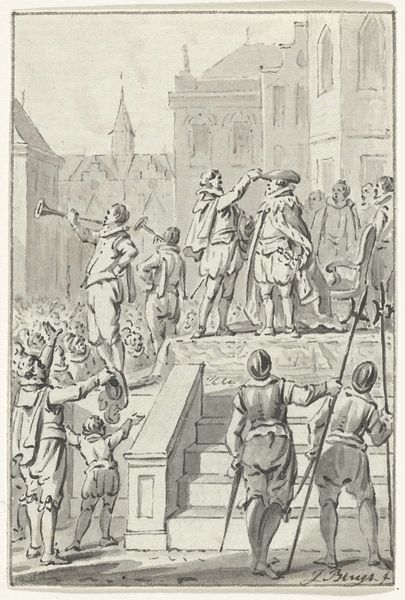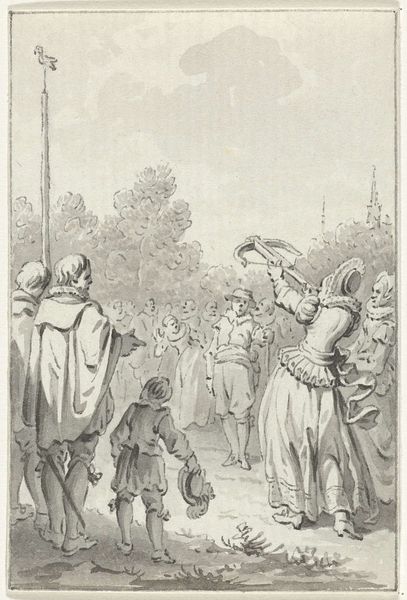
Gravin Ada wordt door graaf Willem I van Texel naar Engeland gezonden, 1204 1778 - 1795
0:00
0:00
drawing, ink
#
drawing
#
narrative-art
#
ink
Dimensions: height 82 mm, width 56 mm
Copyright: Rijks Museum: Open Domain
Curator: The drawing before us, executed between 1778 and 1795 by Jacobus Buys, depicts a pivotal historical moment titled "Gravin Ada wordt door graaf Willem I van Texel naar Engeland gezonden, 1204" and resides here at the Rijksmuseum. It’s rendered in ink, displaying delicate yet distinct linework. Editor: My first impression is one of somber theatricality. The monochromatic palette, with the controlled washes of grey, creates a somewhat bleak atmosphere that's amplified by the almost staged positioning of the figures. The entire scene reads like a prelude to a tragic play. Curator: Indeed. Buys uses the monochromatic medium to focus our attention on the composition. Notice how the eye is led from Ada, reluctantly being escorted, to the ships on the horizon, emphasizing her forced departure. The figures are meticulously arranged, with Willem I commanding the action with a decisive gesture. Semiotically, that pointed finger is not merely directional; it is an accusatory gesture of power. Editor: That accusatory gesture feels especially potent when you consider Ada’s position in history. Here, she is reduced to a passive figure. The history tells the story of a contested inheritance after the death of her father. I'm immediately interested in what that story can tell us about medieval constructions of gender and power. Ada was ultimately sidelined, imprisoned, her agency erased. Curator: The materiality of the ink wash enhances the emotional gravity of the piece, especially in the delicate rendering of Ada's face. Look at the way her downward glance creates an arc that connects to her clinging attendant, who is clearly distraught by this exile. This focus contributes to an almost neoclassical ideal of beauty amid suffering, rendered visible through compositional strategies. Editor: And even with this almost hyper-focused visual style, the historical and social narratives still come to the foreground. This drawing operates, I think, as an important site to remember the complexities of the past, and the narratives which were lost and never truly got the right attention, like that of Ada, and to use that narrative to deconstruct power imbalances today. Curator: Indeed, through Buys’ masterful composition and technique, we gain insight into a historical narrative that resonates with contemporary issues of power and dispossession. Editor: Absolutely. The intersection of art and history invites critical questioning. By seeing works such as this, the personal struggles of women of the past allows a reflection on the gender inequalities that still unfortunately, exist today.
Comments
No comments
Be the first to comment and join the conversation on the ultimate creative platform.
